
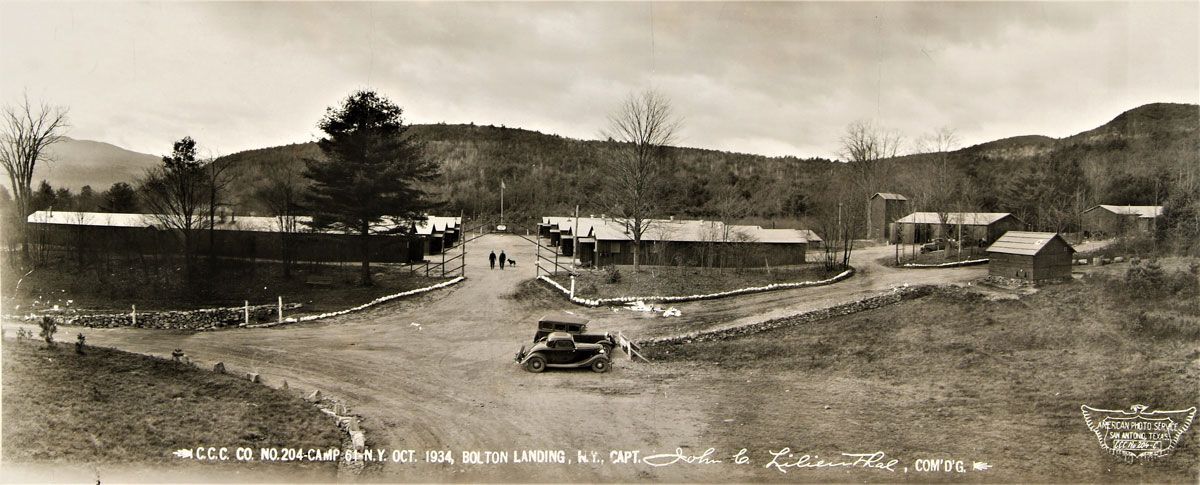
The Bolton Landing CCC camp in the fall of 1934. It had approx. 15 buildings consisting of five barracks, mess hall, recreation hall, administration building, infirmary, shower/toilet, garages, and blacksmith shop. Courtesy of Joe & Betty Demates
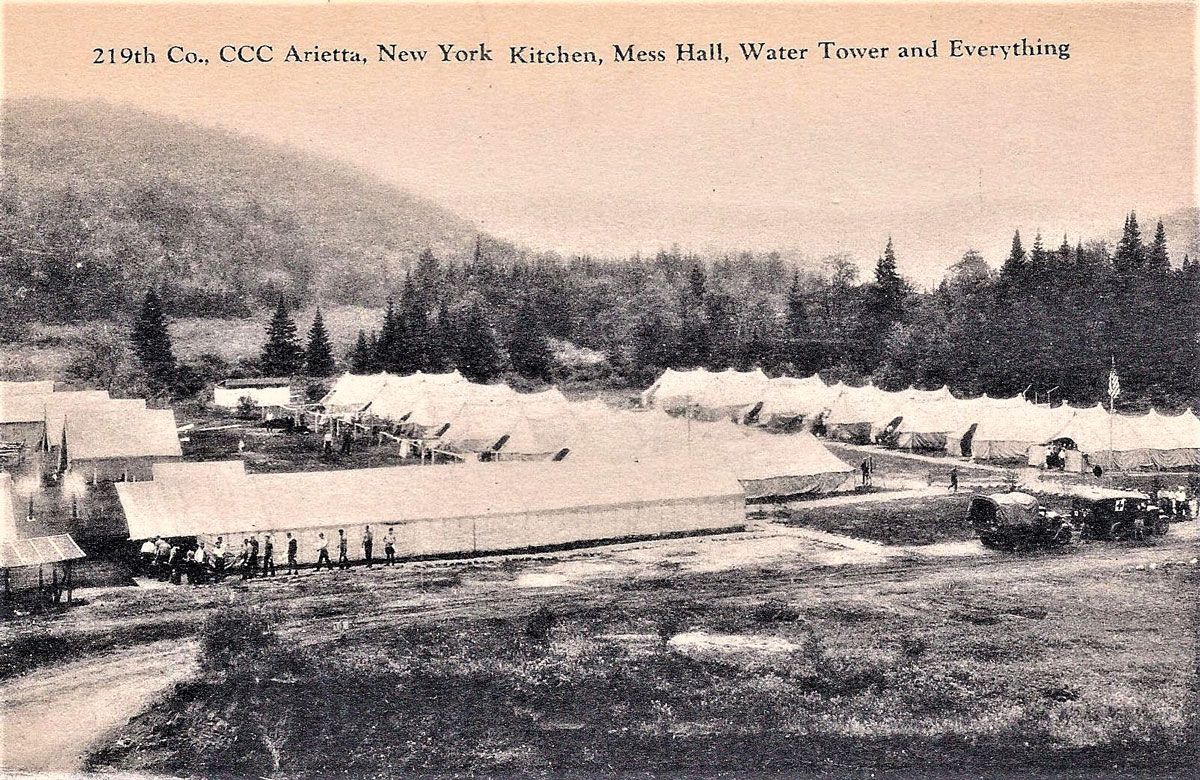
During the summer of 1933 the CCC camp at Shaker Place in the Town of Arietta on Rt. 10 near Piseco Lake housed approx. 200 men in Army tents. There is a flag pole where the men gathered each morning and afternoon for roll call and assignment of duties. The kitchen and long mess hall tent are on the lower left and rows of large tents for enrollees are on the right. Courtesy of Robert L. Markovits Collection
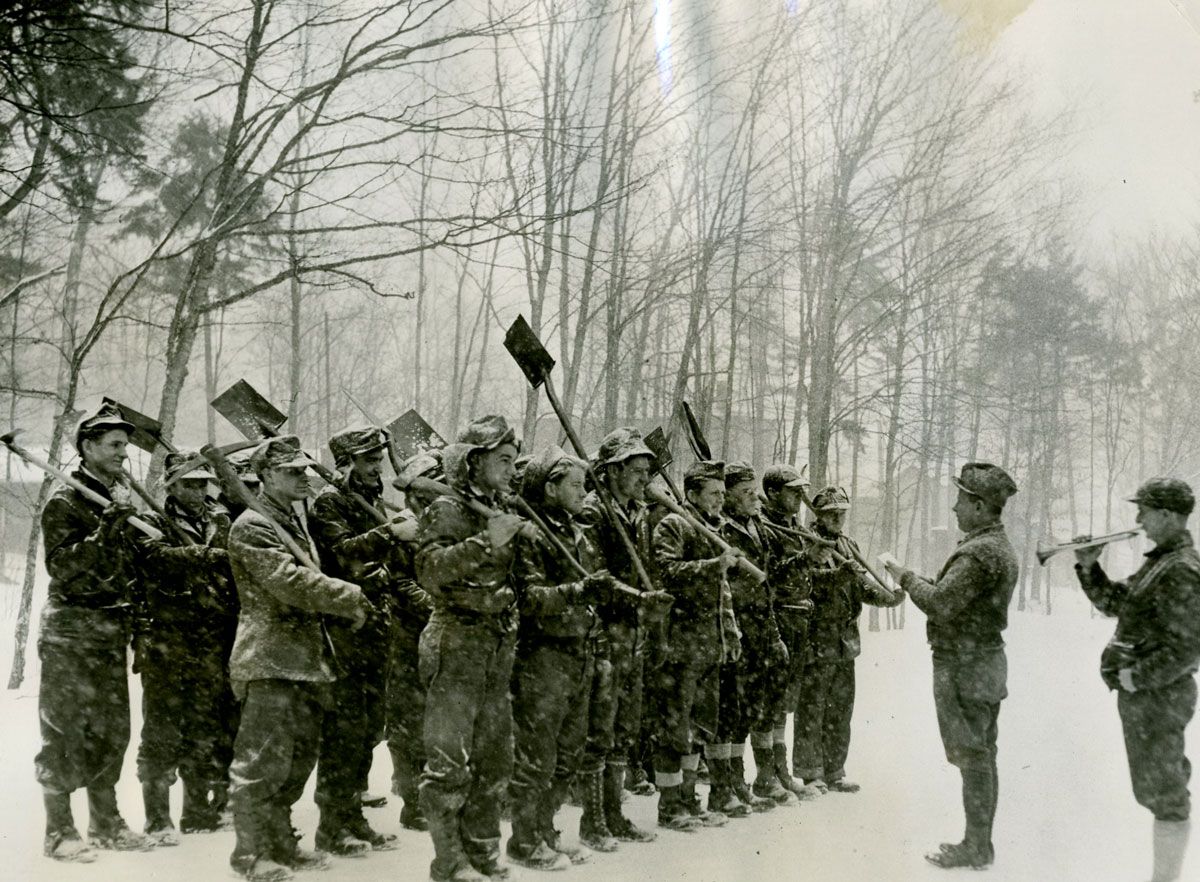
This Associated Press photo dated Dec. 29, 1933, shows Lake Placid CCC enrollees with their shovels and picks at the Whiteface Inn listening for their orders of the day with the bugler poised to give the “rouse” call to their duties in the cold weather. Podskoch Collection
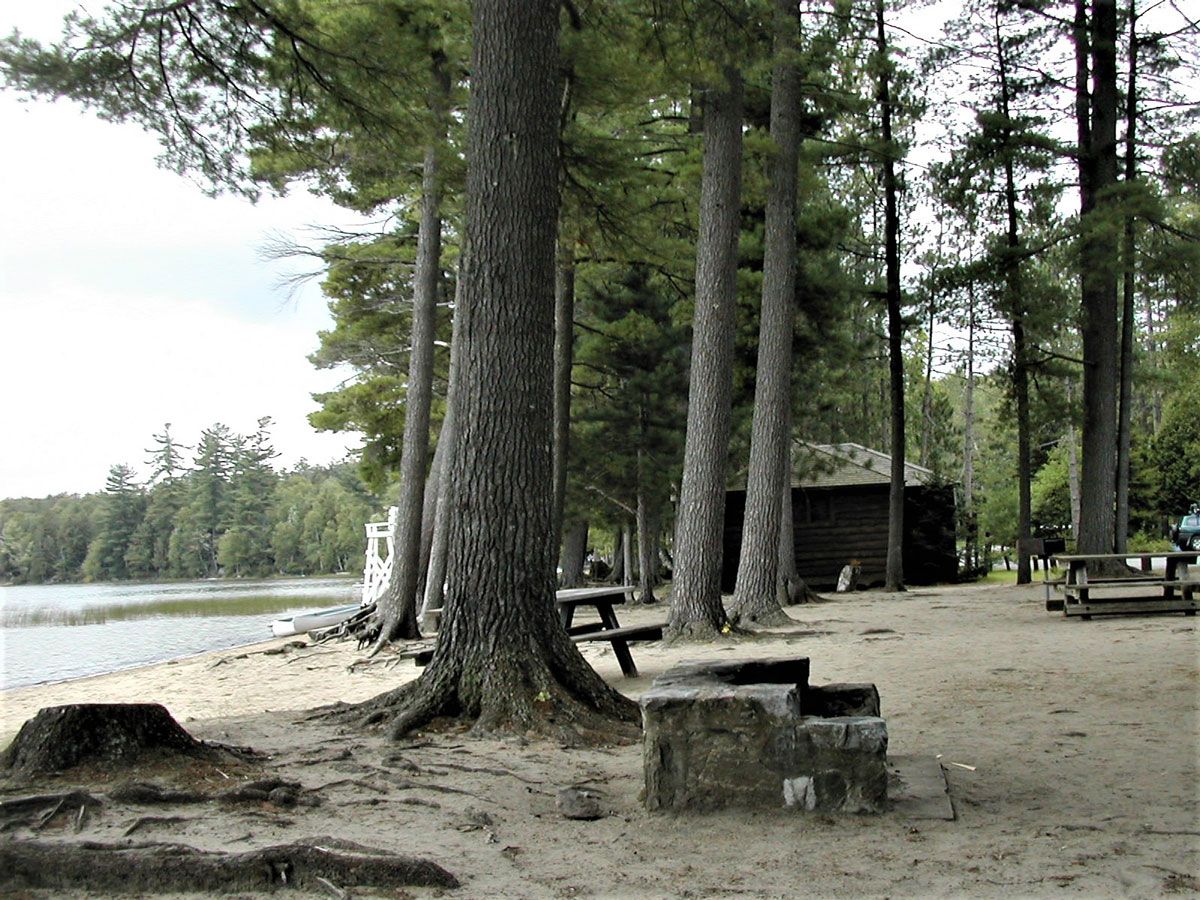
One of the examples of the legacy of the CCC is this beach and picnic area at Lake Eaton Campground near Long Lake. It was built by Indian Lake CCC camp enrollees. Podskoch
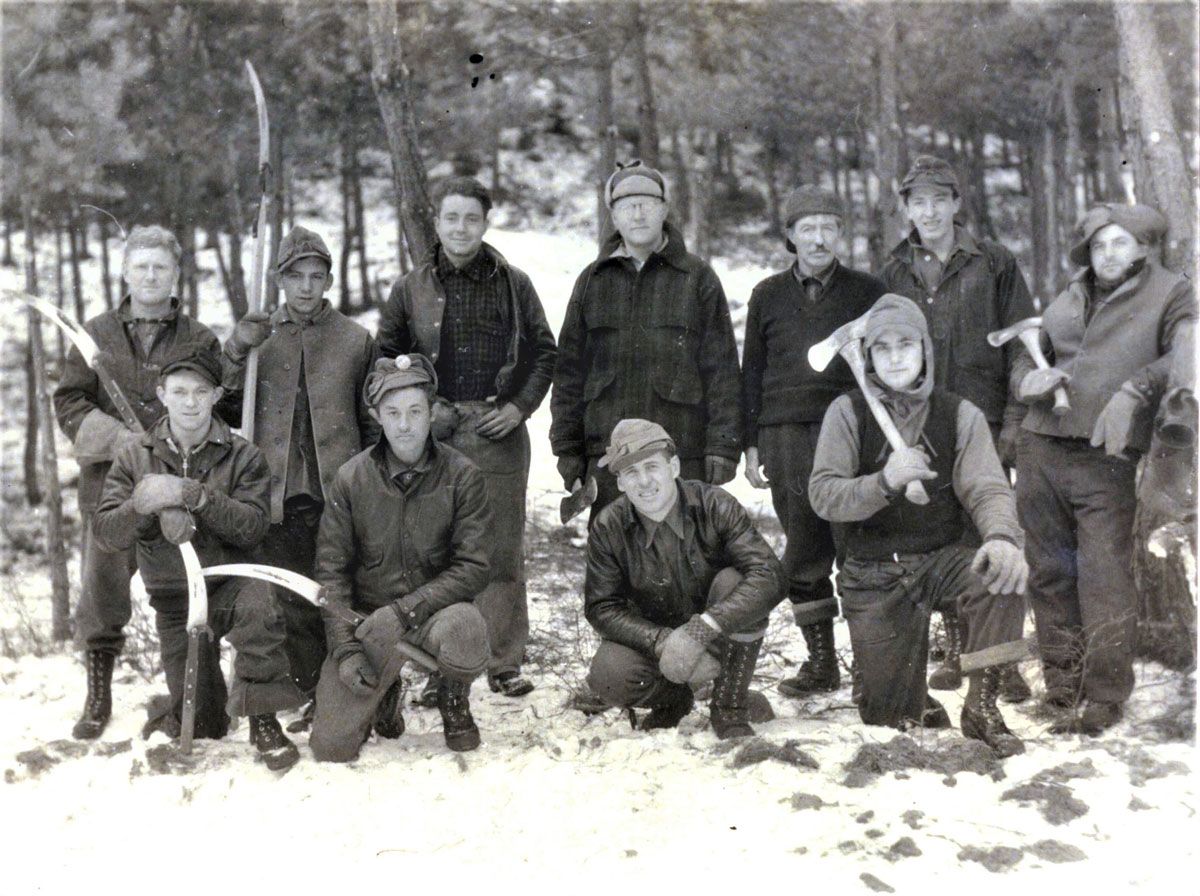
Paul Smiths CCC enrollees and their foreman taking a break from thinning and pruning trees in the state forest near Barnum Pond. Courtesy of Jim Coral
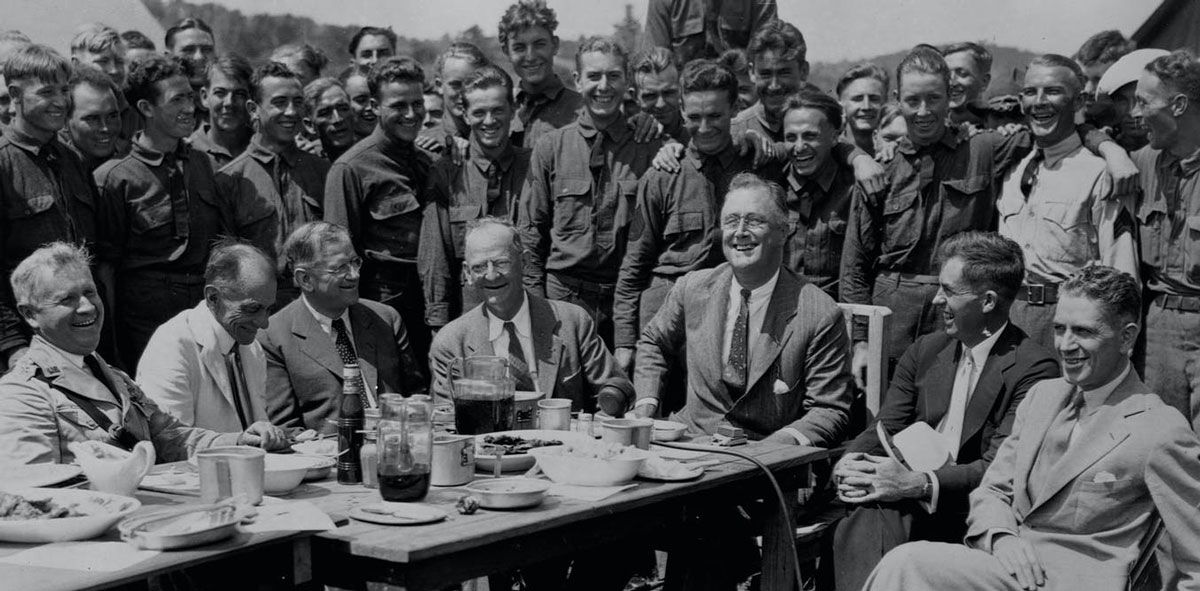
President Franklin D. Roosevelt made his first visit to a CCC camp, at Camp Fechner, Big Meadows in Shenandoah National Park, Virginia, on August 12,1933. National Archives
Written By Megin Potter | Photos Provided
This year marks the 90th Anniversary of the founding of the Civilian Conservation Corps, a peacetime army battling the destruction and erosion of our natural resources. It was the fastest large-scale mobilization of men in US history.
In 1933, during the Great Depression, as part of his “New Deal,” President Franklin D. Roosevelt signed the Emergency Conservation Work Act into law, creating the Department of Labor’s Civilian Conservation Corps (CCC), a national relief program employing 275,000 men and 10,000 supervisory personnel in 1,468 camps across the country and in many US territories.
Roosevelt’s “Tree Army” planted more than three billion trees, created 94 national parks and 741 state parks. They constructed shelters, trails, roads, campsites, and dams; stocked fish; installed and maintained telephone lines; and fought forest fires.
The first CCC camp, “Camp Roosevelt” was near Luray, Virginia. There were 26 camps in New York’s Adirondack region alone. During its 1939-1942 operation, the Stillwater CCC Camp (near Stillwater Central School, where the American Legion is today), housed approximately 200 single men (ages 18-25).
These men worked on many projects in Saratoga County, including the clearing of invasive plants; managing of landscapes through prescribed fires; and the removal of fences, roads, and foundations.
The men enrolled in the program for six months and worked a 40-hour week in exchange for $30/month (the equivalent of approximately $650 today). They also received housing, uniforms, meals, medical care, education, and job training. The government sent $25/month home to the workers’ families, leaving the men with just $5/month in spending money.
Saratoga Battlefield, a New York State historic site since 1927, was designated Saratoga National Historical Park in 1938, and by 1939 the CCC was sent in to perform grueling physical labor (including shoveling shale rock and digging trenches) while also conducting archaeological digs, developing maps, new roads, and offering site interpretation for visitors. FDR was involved in the planning of the park’s Visitor Center and the preservation of its two captured British cannons (that visitors can still see there today).
In 1941, the NPS formally assumed complete ownership and management of the site. With the onset of World War II, there were other employment opportunities, changes in public opinion, and a lack of funding, resulting in an increasing number of desertions. The camp was disbanded by the Spring of 1942.
The CCC’s efforts continue to enrich the lives of many Americans. For more information, visit www.ccclegacy.org or find them at facebook.com/groups/ccclegacygroup
Contributions to this piece were provided by Martin Podskoch, an author, historian, and East Hampton, CT resident recognized for his extensive work documenting the history of the Catskills, Adirondack Fire Towers, and the Civilian Conservation Corps camps.
He is a CCC Legacy Board Member and author of Adirondack Civilian Conservation Corps Camps: History, Memories & Legacy of the CCC, and two other books on the Connecticut and Rhode Island CCCs. He is also the author of the best-selling travel guide, The Adirondack
102 Club: Your Passport & Guide to the North Country.
Podskoch will be presenting the CCC 90th Anniversary, Its History & Legacy in the Adirondacks & Saratoga on Wed, Oct. 18th, 12 noon, at the Saratoga Springs Public Library, 49 Henry St., Saratoga Springs.
Find his books on Amazon, at Barnes & Noble, and at martinpodskoch.com.
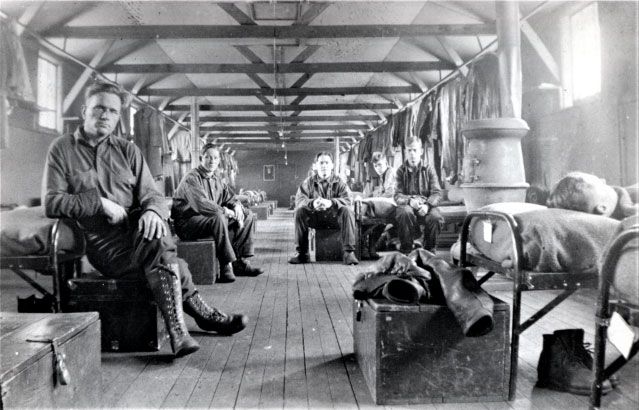
CCC foreman (left) and enrollees relaxing in one of the five barracks in their camp. Forty young men lived there. Three pot-bellied stoves burned coal to keep them warm. The men kept their barracks in an orderly fashion because the Army officers had frequent inspections. Adirondack Experience Library
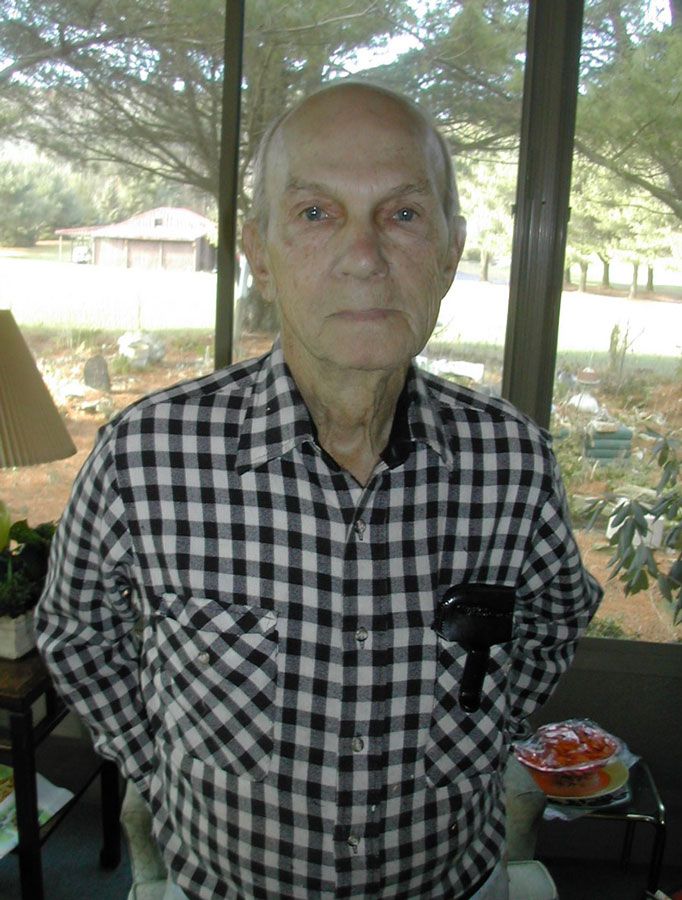
Saratoga Jim Johnson
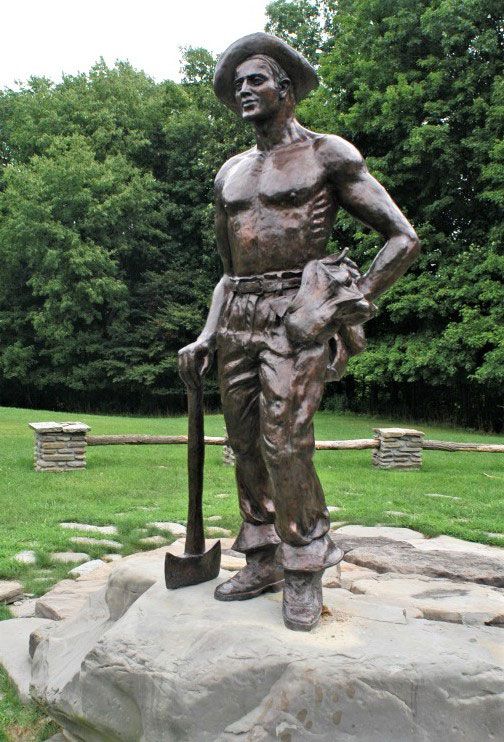
Worker Statue Letchworth State Park Podskoch